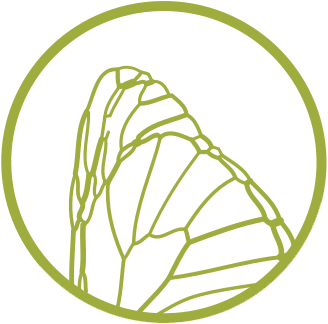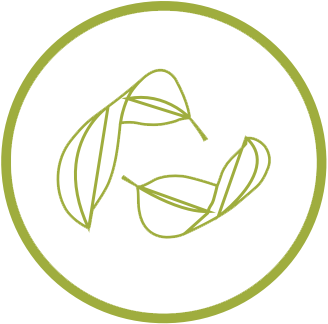
Bone Structure image via Shutterstock
The Airbus Group is taking innovation inspired by nature to the air by using 3D printing to help build a stronger, lighter-weight galley partition that mimics cells structure and bone growth. The design literally lightens each airplane’s load, allowing it to do things like save a projected 465,000 metric tonnes of CO2 emissions per year. According to Airbus, “this makes the bionic partition a groundbreaking development for a sector in which less weight equals less fuel consumption” (read more about how Airbus learns from nature here.)
In this edition of Innovation Inspirations, we’ll take a look at the biology of bones, and explore what else nature can teach us about creating life-friendly materials that are lightweight and super-strong.
Why bones should be industrial designers’ best friend:

Courtesy of Airbus Group
In nature, bones grow in response to mechanical stress and loading. Bones need to be strong, yet lightweight. Bone is made of a composite material that is about 95% hard calcium-based mineral (hydroxyapatite) marbled with an elastic protein (collagen). Instead of being uniform, like most man-made materials, its structural design is optimized between dense and spongy (foam-like) architecture, oriented in the direction of greatest stress. Take a look at these two nature-inspired examples:
The skull of the golden-fronted woodpecker protects it from brain injury by absorbing shock via a plate-like spongy bone in the frontal cranium.
Woodpecker skulls are light, but have to be strong enough to adapt to pounding against wood. The frontal part of the skull is protected from brain injury by a shock-absorbing spongy bone. This bone has a lot of holes in it, making it less dense than the compact type of bone. Additionally, the beak is designed to take high impact forces. So, it’s not just the skull, it’s the whole design that works together.
A metacarpal bone of a horse avoids structural weakness caused by a hole via stress-dispersing microstructure.
Horse leg bones would be too heavy if they were made only of dense bone. Bone is a foam-like cellular material that derives stiffness and hardness from ceramic micro-platelets of hydroxyapatite and toughness from collagen proteins that binds it together. We think of bone as a stiff material, but it does have some compliance.
Nature often uses a combination of stiff and compliant materials wedded together to form strong materials. A compliant, functionally graded material could be a next step in innovation.
How does nature optimize for strength?
The internal structure of bone is optimized for strength, but is lightweight thanks to a latticework of fibers managing both tensile and compressive forces.
There are many ways nature creates strong structures and materials. Cylinders filled with foam, plates that slide under pressure, laminated composites, twisting mechanisms, struts spanning open spaces, functional gradation, and much more. Nature’s designs are endless.
“Nature, imaginative by necessity, has already solved many of the problems we are grappling with.” ~ Janine Benyus
Learn more
Generally speaking, research and development around a biomimetic product is an iterative process. It begins with the application of nature’s deep patterns, which in this case is hard, resilient material densely packed along lines of stress; sparsely packed otherwise. Once proof-of-concept is achieved for the new biomimetic technology, remaining performance and sustainability challenges should be addressed as new information is gleaned through product effectiveness, life-cycle testing, and additional research into nature’s strategies.
For more about the design of bones in nature see Cellular Materials in Nature and Medicine, by Lorna J. Gibson, Michael F. Ashby, and Brendan A. Harley. Cambridge University Press.
Or, Ren L, Qian Z, Ren L. 2014. Biomechanics of musculoskeletal system and its biomimetic implications. Journal of Bionic Engineering 11:159-175.
To learn more about Airbus Group’s innovations watch these videos: Nature Says video or The Living and Autodesk Apply Bionic Design to an Airbus 320 Partition.


